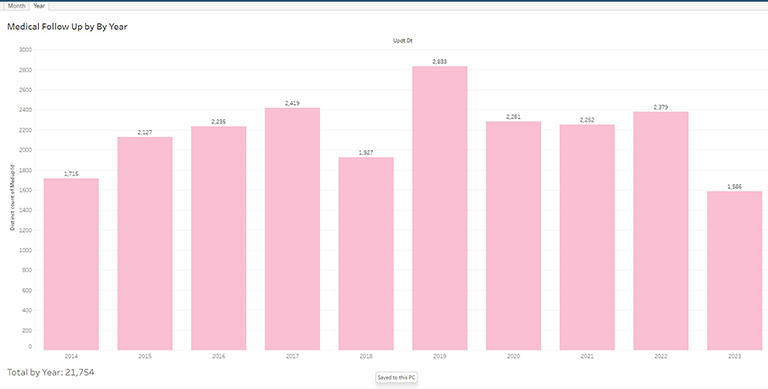08-21-2023
Tableau Visualization
Tableau is widely recognized as one of the premier data visualization tools in the world. Our KTB data team employs it to generate interactive reports that effectively summarize, analyze, and monitor our data. Once data is visualized, it is usually more understandable. Below are several KTB data visualizations made with Tableau.
The Donation by Year report offers a comprehensive summary of our donation data spanning multiple years. It includes information on the donations made by individuals of varying race, ethnicity, and genetic ancestry. Furthermore, the report displays the donations based on sample type, specifically differentiating between blood and tissue donations, over a range of years.




The Donation Map report provides a visual representation of the geographic distribution of donors and donations across the country. It presents an overview of the total number of donors and donations.

The Medical Follow-up Long-Term Analysis report examines the completion rates of medical follow-ups among different groups. It reveals that recently registered donors are more inclined to complete their medical follow-up annually, while donors in their 60s and 70s demonstrate the highest rate of submitting their medical follow-up.

The Medical Follow-up report indicates the number of medical follow-ups completed each month and year.

The Aliquot Usage by Type report reveals the number of samples dispatched monthly and yearly. It illustrates the usage of aliquots according to both sample type and extraction type across a given time period, whether it be a month or a year. The report also provides a visual representation of the usage of aliquots based on genetic ancestry over several years. To check for aliquot availability, the report offers interactive filters such as used year, sample type, extraction type, cellularity, and SNP categories.

Two more interesting visualizations are not pictured here:
The Breast Cancer after Donation report consistently follows up with donors who have received a breast cancer diagnosis following their initial donation. It lists all donors who have been diagnosed with breast cancer but whose diagnosis dates are unavailable.
Also, every year, our medical follow-up questionnaire includes inquiries regarding newly diagnosed cases of breast cancer and pregnancy. This data is crucial for our researchers because they can use it to compare the characteristics of our donor population with the general population, enabling them to predict the development and distribution of breast cancer among diverse demographic groups.




